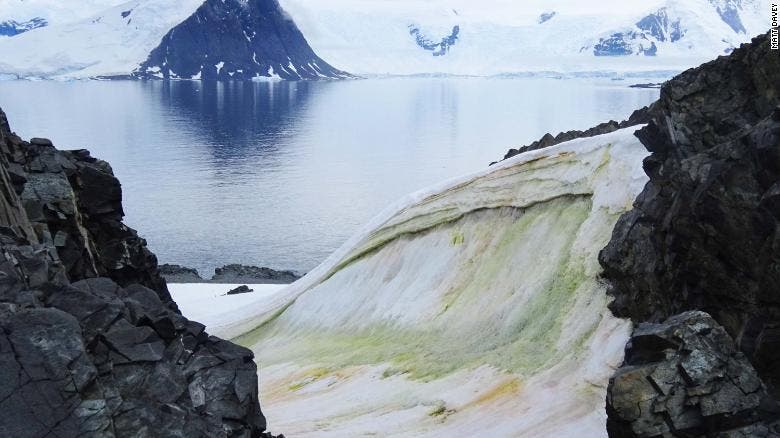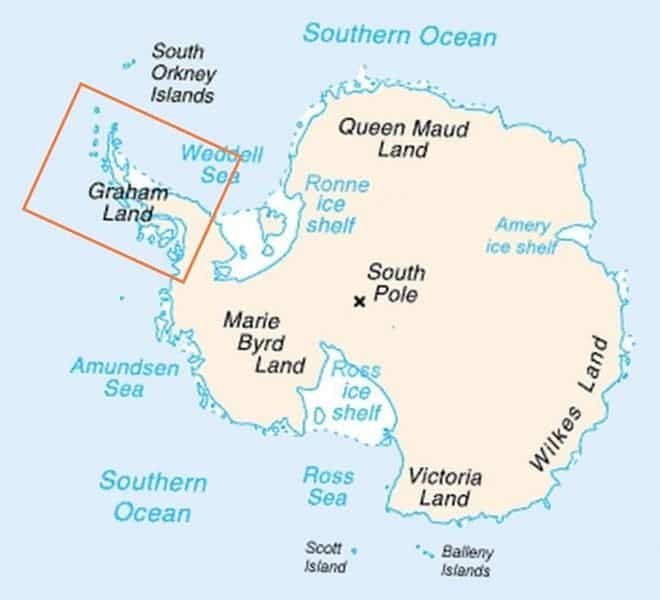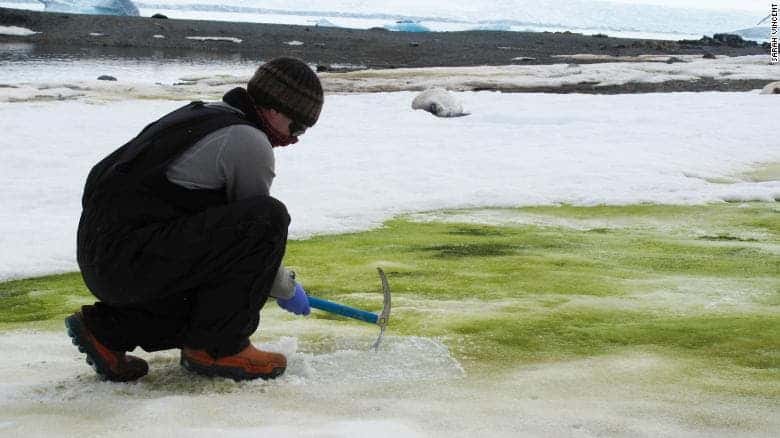The Antarctic peninsula is one of the fastest-warming regions on the planet. Temperatures have already increased 1.5ºC compared to pre-industrial levels and this is likely to continue, leading to a wide set of consequences.

Among them, and one of the most visible ones has been the so-called green-snow. Blooming algae across the surface of the peninsula are causing the snow to turn green. The phenomenon can be linked to climate change and is likely to spread further across the icy continent as temperatures go up, according to a new study.
A group of researchers created the first large-scale map of microscopic algae on the Antarctic peninsula, using on-the-ground measurements and satellite data gathered between 2017 and 2019. Warmer temperatures create more “habitable” conditions for the algae, the authors argued.

“With the available area for plant colonization on the Peninsula likely to increase by up to threefold due to this warming, understanding how snow algae fit into Antarctica’s biosphere and their probable response to warming is critical to understanding the overall impact of climate change on Antarctica’s vegetation,” the study reads.
The map will be used as a baseline to understand the speed at which the Antarctic Peninsula is turning green due to the climate crisis, offering sustenance to other species. The researchers already found the algae can form bonds with fungal spores and bacteria. “It’s the start of new ecosystems,” Matt Davey, one of the authors, told The Guardian.

Large areas of green snow can now be seen along the coastline of the Antarctic Peninsula, mostly in warmer areas that have temperatures above zero degrees Celsius in the summer months – which go from November to February. Unusually high temperatures were recorded in February, including a few heat-waves.
The researchers identified 1,679 separate blooms of green algae on the snow surface, covering an area of 1.9 km2. This represents a carbon sink of around 479 tons per year. A carbon sink is a reservoir that absorbs more carbon than it releases. Almost two-thirds of the algal blooms were found on small islands around the peninsula.
“As Antarctica warms, we predict the overall mass of snow algae will increase, as the spread to higher ground will significantly outweigh the loss of small island patches of algae,” Dr Andrew Gray, lead author of the paper, and a researcher at the University of Cambridge, said in a statement.
The researchers had noticed in the past changes in green lichen and moss in the Antarctic Peninsula. But these grow extremely slowly compared with algae.
In the future, the team will focus on measuring red and orange algae in order to determine how their presence might be affecting the heat-reflecting albedo quality of the snow.
The article was published in the journal Nature Communications.






